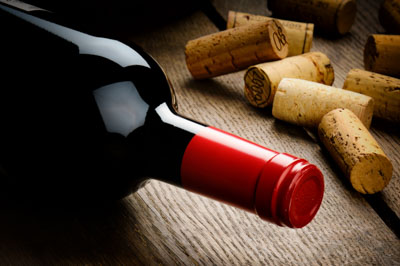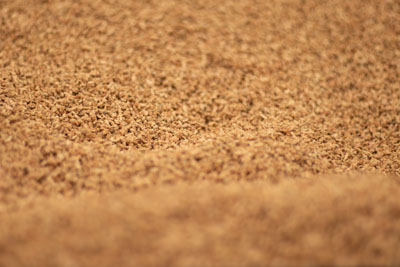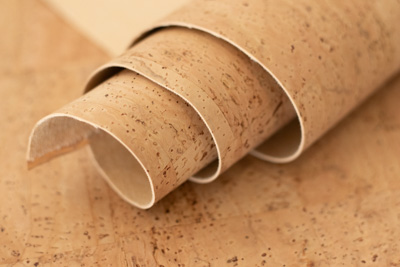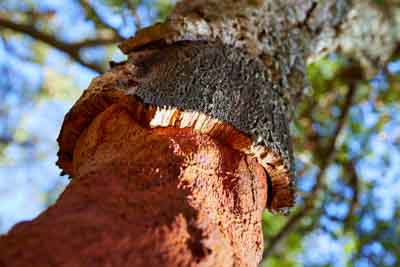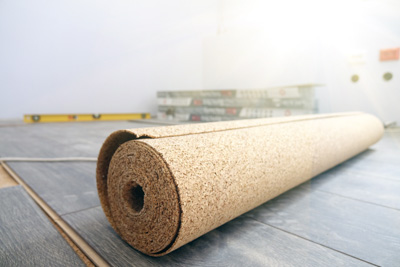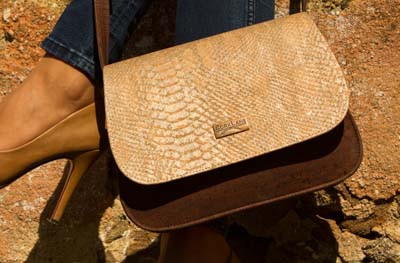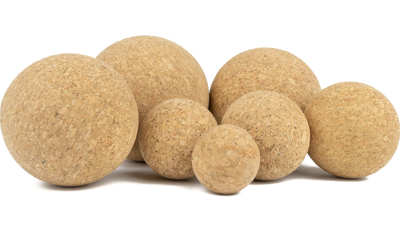PRODUCTS
From the initial stage of processing virgin cork to the final production of high-quality cork articles, Portugaliacork boasts a range of diverse production units, each of which is specialised in crafting various cork products with unique techniques and exceptional craftsmanship. These specialized units work diligently to ensure that every cork item reflects the rich heritage and innovative practices associated with cork craftsmanship.
Cork stoppers and bottling products
All types of high-quality cork stoppers, wood and plastic bartops, PVC capsules for bottles, wire cages, and other bottling accessories are available to satisfy your every need. At Portugaliacork, we provide an effortless way for you to source everything essential to effectively bottle your exquisite wine or spirit. Our carefully crafted products ensure that each bottle is sealed to perfection, guarding against any potential quality loss of the valuable contents inside. Whether you are a small-scale producer looking to make your mark or a large winery aiming for excellence, our extensive selection is designed to fulfill all your bottling requirements, giving you peace of mind and confidence in your packaging solutions. Explore our collection to find the perfect match for your bottling endeavors today!
Cork granules
Cork granules are small particles derived from the bark of the cork oak tree (Quercus suber), a renewable and sustainable resource harvested every 9–12 years without harming the tree. They are produced by grinding cork bark into various sizes, ranging from fine powder (cork dust) to larger granules (0.2–12 mm), and sorted by density (45–250 kg/m³) to suit specific applications. The granules retain cork’s natural properties: lightweight, flexible, moisture-resistant, and excellent thermal and acoustic insulation due to tiny air pockets within the material.
Cork granules are a versatile, sustainable material with growing popularity in eco-conscious applications, replacing synthetic alternatives like plastic or rubber in many industries.
Portugaliacork has successfully developed two distinct brands that cater to specific markets. The first, Eco Cork Infill, specializes in offering high-quality cork granules that are specially designed for use in construction of sports fields. The second brand, Cork Playground, focuses on supplying safe and environmentally friendly cork granules specifically designed for children’s playgrounds surfaces. These granules ensure a soft landing for kids while also being sustainable and eco-friendly, promoting both play and safety in outdoor environments. Together, these brands represent Portugaliacork’s commitment to innovation and environmental responsibility in the production of cork products.
SUBERISE Cork Leather
Cork fabric has gained much popularity and praise across various industries, due to its unique and trendy design, as well as its eco-friendliness.
With an increasing number of brands recognizing its benefits, cork leather is becoming a go-to choice for conscious consumers looking for stylish yet sustainable options. The cork material is considered to be a superior option, providing a guilt-free alternative to traditional leather. This innovative cork textile not only ensures comfort and flexibility but also showcases a distinct aesthetic that appeals to modern sensibilities.
Unlike leather, which involves cruelty to animals, SUBERISE cork leather is derived from the bark of a cork oak tree, making it an ethical alternative that is much preferred by those who are environmentally-conscious. Additionally, cork fabric is water-resistant and easy to clean, making it a practical choice for everyday use.
Moreover, we are placing great emphasis on sustainability, producing a material that is eco-friendly, durable, and of high quality.
This choice reflects a commitment to sustainability and emphasizes the importance of protecting our planet for future generations.
By choosing cork leather products, consumers can make a significant contribution to the environment and support a responsible, eco-friendly industry that puts ethical values at the forefront. As awareness grows, we anticipate a broader adoption of cork leather across fashion, furnishing, and accessory markets.
Virgin cork and cork wood
Virgin cork is obtained only during the very first harvest of the cork tree, also known as Quercus suber, and it boasts a distinctly natural appearance and texture that is highly sought after. As a material that is 100% natural and eco-friendly, raw cork serves as an exceptional option for decorative applications, particularly in terrariums designed for reptiles, spiders, and various other animals. This unique material plays a vital role in helping to simulate their natural tropical rainforest environments, ensuring that these creatures feel more at home in their habitats. In addition to its fantastic use in terrariums, virgin cork is also an excellent choice for use in gardens, where it can enhance the overall aesthetics and functionality, as well as in various interior design projects that aim to bring a touch of nature indoors. Its versatility and appeal make virgin cork a favored material among designers and nature enthusiasts alike.
Cork rolls and sheets
Cork rolls and sheets are incredibly versatile and sustainable materials that are widely utilized in the construction sector due to their outstanding thermal, acoustic, and vibration insulation properties. These materials not only offer exceptional performance but also possess an eco-friendly and durable nature, making them a highly sought-after choice among builders and architects alike. Derived from the bark of cork oak trees (Quercus suber), cork products are renewable, biodegradable, and play a significant role in carbon sequestration. This unique characteristic positions them as ideal materials for green building projects, allowing for environmentally-conscious construction practices. In addition to their insulation benefits, cork rolls and sheets contribute to improved air quality and reduce energy consumption in buildings, further enhancing their value and appeal in sustainable development initiatives. As awareness of environmental issues increases, the demand for cork materials in construction continues to rise, paving the way for innovation and growth within the industry.
Cork fashion and cork design
Cork fashion is not just a stylish option; it is a thoughtful and ethical choice that artfully blends functionality with a deep commitment to environmental responsibility. This innovative approach is gaining significant traction in both mainstream and luxury markets, as consumers increasingly seek sustainable alternatives in their fashion and design choices. Portugaliacork proudly owns the Corklane brand, which specializes in creating exquisite sustainable bags, wallets, and purses that utilize vegan materials, including the unique and versatile Portuguese cork fabric. Our meticulously crafted designs not only reflect our core values of sustainability but also showcase our compassion for all living creatures, embodying a philosophy that honors nature and the planet. With a diverse range of classic and trendy styles to choose from, our collections cater to fashion enthusiasts who desire both elegance and ethics, allowing them to express their individuality while making a positive impact on the environment. Each piece tells a story of care, sustainability, and awareness, offering our customers a chance to be part of a movement towards a more responsible and fashionable future.
Cork yoga
Cork yoga accessories, made from the renewable bark of cork oak trees, are popular in the yoga community for their eco-friendly, durable, and functional properties.
These accessories not only minimize environmental impact but also resonate with the increasing demand for sustainable living among consumers.
Harvested primarily in Portugal, cork is sustainable, biodegradable, and supports carbon sequestration, aligning with the wellness and environmental ethos of yoga practitioners.
As more individuals seek to integrate mindfulness and wellness into their lifestyles, the choice of materials and products has never been more critical.
These accessories leverage cork’s natural qualities—non-slip grip, antimicrobial properties, lightweight durability, and a soft, natural texture—making them ideal for enhancing yoga practice while complementing the aesthetic and ethical appeal of cork fashion.
From yoga mats, cork blocks and cork balls to cork cylinders, each accessory serves a unique purpose designed to enhance the yogic experience and promote sustainability.
Cork balls and discs
Cork characteristics (elasticity and low permeability to liquids and gases) provide an excellent material to be used in the manufacture of the most diverse products.
Cork balls and cork discs can be made of 100% natural cork, colmated cork or agglomerated cork. To protect its natural structure and ensure the technical performance, the latest technology is used in the sterilization, cleaning and refinement of the cork balls.
Natural cork balls and discs are 100% natural and they are obtained from the best Portuguese cork.
Colmated cork balls and discs are obtained through a process used to improve the performance and mechanical levels of natural cork balls of medium quality.
Agglomerated cork balls and discs are produced using cork granules and a bounding agent through a very rigorous manufacturing process.



